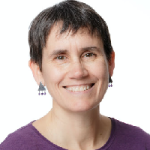People Listing
Alan Chen
Professor
Research Interests: Experimental nuclear astrophysics; radiative alpha- and proton-capture reactions; charged-particle transfer reactions; recoil separators and magnetic spectrographs
Ryan Cloutier
Assistant Professor
Research Interests: exoplanets, planet formation, planet composition, M dwarfs, observational astronomy
Ryan Cloutier’s research focuses on the detection and characterization of the galaxy’s most common planets around its most common stars. These exoplanets have sizes between that of the Earth and Neptune and do not have an analog in our solar system that we can study up close. His interests are in using observational techniques to understand the compositions of these so-called super-Earths and sub-Neptunes, to inform our understanding of how these planets form and whether their surface conditions may be hospitable for life.
William Harris
Professor Emeritus
Research Interests: Globular clusters, stellar populations, evolution of galaxies
William Harris and The Big Picture
My main research interests are in the earliest stages of galaxy evolution — the first few Gigayears of a galaxy’s history during which structures like its halo stars and globular clusters emerged. Their properties yield unique clues to the most active part of galaxy formation. See my webpage for more, but here’s a shortlist of projects I’m currently involved with:
Hubble Space Telescope imaging of a series of supergiant elliptical galaxies in the cosmologically “nearby” universe at distances from 40 to 200 Megaparsecs.¬† These giants have the largest globular cluster populations known (tens of thousands of clusters per galaxy) and with this data, our team is building up the biggest photometric database for globular clusters in existence.¬† With this material we are exploring patterns in the distributions of globular cluster luminosity, heavy-element enrichment, and spatial distributions in their galaxy halos — all of which are tracers of their formation epoch.
Correlations between globular cluster populations and other large-scale properties of their host galaxies, including dynamical mass, galaxy type, and (very puzzlingly) their central supermassive black holes.
Dynamics and assembly history of groups of galaxies over the redshift range z=0 to 1.
Photometry and modelling of the halo-star populations in nearby galaxies such as M33, NGC 5128, and M87.
Developing hydrodynamic modelling for the formation of massive star clusters.¬† The formation stage of “true” globular clusters (in the mass range of 0.1 to 10 million Solar masses) from their parent molecular clouds is the least well understood, but also most crucial, stage in their histories, and is likely to have produced important feedback on the larger-scale star formation history of the entire galaxy.
Laura Parker
Professor
Research Interests: Observational studies of galaxy evolution, galaxy groups and clusters, and dark matter halos.
My research interests lie in the general area of observational cosmology and galaxy evolution. I am most interested in the processes of galaxy and structure formation and I work on problems related to the relationship between observed, luminous galaxies and the dark matter halos that host them.
Some specific problems we’re currently working on include: the dynamics and dynamical evolution of galaxy group systems, the dark matter halos of galaxies in different environments, the growth of central galaxies in groups and clusters, how group galaxy properties depend on the X-ray properties of the host group.
Prospective students? please read my letter to prospective graduate students, and feel free to contact me.
Supervisor Letter:
Dear Prospective Graduate Student,
I am an observational astronomer interested in how galaxies form and evolve. My group uses imaging and spectroscopic data from ground- and space-based observatories at many wavelengths to measure the properties of galaxies. We are particularly interested in the role that environment plays in galaxy evolution and so we study large populations of galaxies living in dense regions like galaxy groups and clusters. Using large samples of galaxies, we are trying to understand the physical mechanisms driving galaxy transformations over cosmic time.
Students in the group work on a diversity of projects ranging from constraining the amount of cold, star-forming gas that is stripped from galaxies when the fall into a cluster to comparing observed galaxies to those in state-of-the-art cosmological simulations.
In recent years much of our work has focussed on the local universe, where there are large sample of galaxies with multi-wavelength observations available, but with new facilities in the coming years we intend to extend our studies to more distant systems that we see when universe was a much younger and more active place.
I’m actively looking for enthusiastic students interested in galaxy evolution and observational cosmology. Please contact me at lparker@mcmaster.ca if you think this is a research area you might be interested in!
Laura Parker
Ralph Pudritz
Professor
Research Interests: Star formation, planet formation, astrobiology
I am a theoretical astrophysicist and my research focuses on star and planet formation. I completed my undergraduate studies at UBC in mathematics and physics. I then moved to the University of Toronto for my M. Sc. (in theoretical physics). I returned to UBC to do my Ph.D. in astrophysics under the supervision of Greg Fahlman, completing it in 1980. I took up an NSERC Postdoctoral Fellowship at the Institute of Astronomy in Cambridge (England). I went on to further postdoctoral research with Chris McKee and Jon Arons at the Astronomy Dept. at Berkeley, and with Colin Norman at the Johns Hopkins University. I joined the faculty at McMaster in 1986. Research Leaves and Fellowships over the subsequent years have taken me to many outstanding research centres including the Observatoire de Grenoble (1988, 1992), the Max-Planck Inst. for Astronomy in Heidelberg (1993), the Harvard-Smithsonian Center for Astrophysics (1993), the Max-Planck Institute for Astrophysics in Munich (1997), the Canadian Institute for Theoretical Astrophysics (CITA) in Toronto (1990 and 1997), Caltech (2001), and the Kavli Institute for Theoretical Physics (KITP) in Santa Barbara (2007/08).
I have been involved in many aspects of Canadian as well as international astronomy and astrophysics, having served on Time Allocation Committees (CFHT and JCMT), NRC Science Advisory Committees (Gemini, JWST), Visiting Committees (U.S. NRAO), Advisory Boards (HIA, CITA Council), and review committees. I chaired Canada’s decadal survey of Astronomy and Astrophysics – the NRC-NSERC Long Range Planning Panel (1998/2000) – and was the principal author of the LRP report; “The Origins of Structure in the Universe”. The LRP is playing the central role in guiding the development of Canadian astronomy in this decade and beyond, having involved Canada in ALMA, JWST, TMT, SKA, and several other important space and ground based telescopes and observatories.
Most recently, I spear-headed and am the founding (2004) Director of McMaster’s Origins Institute (OI). Its scientific mission is to engage in fundamental transdisciplinary research on the origin of structure and life in the cosmos. The scientific themes of the OI cover 6 broad themes in science: the origin of space and time (cosmology, early universe), structure in the universe (planets, stars and galaxies), the elements, life (astrobiology), species and biodiversity, and humanity. In addition to its research foci, the OI has developed a novel OI Undergraduate Research specialization. The OI is committed to public outreach and education through its award winning OI Public Lecture series and played an important role in the creation of the McMaster 3D theatre. The OI has also run major international annual scientific conferences on some of the most important questions in contemporary science.
Supervisor Letter:
Ralph Pudritz
Department of Physics & Astronomy
McMaster University
Dear Prospective Research Students:
My research focuses on the theoretical and computational study of star and planet formation, and astrophysical and planetary aspects of the origin of life including experimental work in our Origins of Life Lab. Star formation impacts a huge range of astophysics – from planet formation to galaxy formation and evolution and cosmology. Stars and planets form in protostellar disks and there are very deep connections between these subjects through them. The discovery of over 4000 exoplanets is driving a major revolution in astrophysics as we try to develop new theoretical models that can explain the wealth of new data and planetary populations ‚Äì such as the dominant SuperEarths. The characterization of the composition of the atmospheres of rocky exoplanets is one of the main drivers for our search for life in the universe. Members of my group perform a wide range of state of the art, high performance computing simulations of star formation ‚Äì from galaxy scales down to individual stars forming in their protostellar disks; planet formation and the properties of exosolar planets and their atmospheres; and work on early Earth and prebiotic physics and chemistry that lead to the origins of RNA. We connect our work with exciting observations from new observatories such as the James Webb Space Telescope, as well as the ALMA millimeter observatory https://www.eso.org/public/teles-instr/alma/ allow us to connect the work with new observations. I am also the Co-Investigator for our Origins of Life Laboratory in McMaster’s Origins Institute https://origins.mcmaster.ca/research/origins-of-life-laboratory/
There are many exciting research opportunities in my group. In addition to individual meetings, I have regular group meetings every week in which everyone discusses their results and ideas. Students and postdocs at all levels are well connected to one another as well as with the many external collaborators across the world, that we work with.
Research topics in my group:
Star Formation explores a wide range of interconnected problems starting from the scale of the formation of molecular clouds in galaxies, down to filamentary structure of molecular clouds, to the formation of star clusters within them, to the collapse of individual gas “cores” within such clustered environments (to form single or binary stars), and on down to the physics of protostellar disks through which gas accretes onto their central stars and from which highly collimated jets are launched. Much of the research involves state of the art 3D numerical simulations, most recently using the RAMSES Adaptive Mesh Refinement code. We are currently using RAMSES for multiscale galaxy simulations that allow us to trace star formation in magnetized galaxies all the way from cloud formation on many kpc scales, through to star clusters and over the next year or two ‚Äì down to the 100 AU scales needed to study massive star formation in clusters. See recent articles:
-Star formation in filamentary molecular clouds and a new paradigm for star formation: see our review Andr?® et al, (2014): https://arxiv.org/pdf/1312.6232.pdf
– The formation of massive stars: Klassen, Pudritz et al (2016):
https://arxiv.org/pdf/1603.07345.pdf
– The formation of star clusters: Howard, Pudritz, & Harris ( 2018):
https://arxiv.org/ftp/arxiv/papers/1808/1808.07080.pdf
-Theory and simulations of protostellar jets and outflows: see review Pudritz and Ray (2019):
https://arxiv.org/pdf/1912.05605.pdf
Planet Formation: is arguably one of the hottest topics in astrophysics, and indeed science, today. In my group we are investigating all aspects of planet formation, connection how planets form in protostellar disks, to their final orbits and chemical compositions. This “end-to-end” approach can be used to predict the composition of exoplanet atmospheres, which will be observed for the first time with JWST. This research involves theoretical work, as well as extensive use of astrochemistry codes and population synthesis simulations. Some recent papers in my group include:
- • A theory for planet traps and the migration of forming planets in disks (2011): https://arxiv.org/pdf/1105.4015.pdf
• Linking the composition of atmospheres to planet formation (2016): https://arxiv.org/pdf/1605.09407.pdf
• The combined effects of disk winds and turbulence for planet formation and composition (2022): https://arxiv.org/pdf/2207.01626.pdf
• Bifurcation of planet formation histories (2022): https://arxiv.org/pdf/2111.01798.pdf
Origins of life: focuses on the connection between protostellar disks, and the properties of pre-biotic chemistry on newly formed habitable planets. Nucleobases, amino acids, and fatty acids are found in meteorites and can be synthesized in 100 km parent bodies – planetesimals – which are also the building blocks of terrestrial planets. We have done calculations to show how these molecules are synthesized within planetesimals. Recent work focuses on understanding how meteoritic delivered biomolecules evolve on early planetary conditions, to result in the formation of RNA polymers – the first genetic materials. See our recent article:
• Fate of nucleobases in warm little ponds, upon delivery by meteorites to the Early Earth, see our Cozzarrelli prize paper; (2017): https://arxiv.org/pdf/1710.00434.pdf
• HCN synthesis in early Earth atmospheres leading to biomolecule formation (2022): https://arxiv.org/pdf/2201.00829.pdf
I have many interesting research projects within this broad set of themes. I will be happy to discuss these with you. If you are interested, please send me e-mail at pudritz@physics.mcmaster.ca or consult my departmental home page. I look forward to hearing from you!
With best wishes,
Ralph Pudritz
Fereshteh Rajabi
Assistant Professor
Research Interests: Data-oriented theoretical astrophysics, radio transients, masers, quantum optics, quantum simulation, astrophysics, laser physics, quantum optics, and ultracold atoms
Alison Sills
Professor & Chair
Research Interests: Blue Straggler Stars, Globular Cluster Formation and Dynamics
In my research, I use knowledge of stars and stellar evolution to understand unusual stars in dense places, their interactions and their effect on their environment.
A selection of questions that my group is interested in:
- Blue Straggler Stars
- What are the expected pulsation characteristics of collisional & mass transfer blue straggler stars? Are those in agreement with the observations?
- What happens to the angular momentum in a stellar collision and during the subsequent evolution of the product? Is this the same or different for binary mass transfer products?
- Globular Cluster Formation and Dynamics:
- How can we explain the multiple populations now seen in globular clusters? Are the current explainations viable? What other ingredients are required to fully understand this problem?
- What are the connections between local clustered star formation and the formation & evolution of globular clusters?
I answer these questions using a variety of theoretical techniques and computer codes. Depending on the situation, I use stellar evolution codes, smoothed particle hydrodynamic codes or stellar dynamics codes, running on computers which range from laptops to supercomputers.
I am an active member of collaborations with researchers from Canada, the US and Europe, including the MODEST (MOdelling DEnse STellar Systems) collaboration and the MYStIX collaboration.
Supervisor Letter:
Alison Sills
Department of Physics & Astronomy
McMaster University
Dear Prospective Graduate Student,
My work is theoretical, and covers stellar evolution, stellar dynamics, and hydrodynamics. I am interested in stellar populations that occur in unusual circumstances, such as stellar collisions in globular clusters. I study both the populations themselves and the information that the populations can give us about the environment they are in. While most of my work involves computer simulations, I also have experience working with optical observational data, particularly from the Hubble Space Telescope.
I have been at McMaster since July 2001. My most recent students worked on observations of globular cluster properties in M87 (with Bill Harris); theoretical models of star cluster formation (with James Wadsley); models of very young star clusters including both the stars and the gas; and on models of globular clusters that were formed in a dwarf galaxy which was then accreted by the Milky Way. I usually take on one or two summer or senior thesis undergraduate students as well. I may have room in my group for an exceptional graduate student this year, and have a variety of projects available, including some involving special-purpose computing hardware for stellar dynamics, binary star modelling, cluster formation and early evolution, and global cluster properties.
Astronomical research is a collaborative process, and I try to treat graduate students as collaborators as much as possible. The first few years of graduate school are an important transition from being an undergraduate student (when the answers to all questions are known) to becoming an independent researcher (when asking the right questions is as important a skill as finding the answers). All my students choose projects based on a combination of their interests and mine. MSc projects are better-defined from the beginning, and tend to involve more input from me, while PhD projects are more often suggested and planned by the students themselves. I encourage students to attend conferences, both in Canada and abroad, and I expect them to publish the results of their research in international journals at all stages.
Please contact me at  asills@mcmaster.caif you think this is a research area you might be interested in or if you have any other questions.
Alison
James Wadsley
Professor
Research Interests: Computational Astrophysics: Cosmology, Galaxy Formation, Star Formation, Protoplanetary Disks, Hydrodynamics, Numerical Methods, Parallel Computing
I was born in Australia and I have been in North America (primarily Canada) since 1992, when I started Graduate work in Astronomy at the University of Toronto. Working with my supervisor Dick Bond at CITA I applied gasdynamical simulations to the Lyman alpha forest problem. I was a postdoc at the University of Washington working with Craig Hogan and the “N-body Shop” group where I wrote the Gasoline code with Joachim Stadel and Tom Quinn. I then came to McMaster to work with Ralph Pudtriz and Hugh Couchman in Physics and Astronomy. In 2002 I switched from full-time research to start spending time all over campus assisting researchers to develop parallel programs for the new SHARCNET supercomputer clusters. I was still involved in cutting edge astrophysics research and in July 2003 I took up a tenure track position with the Physics and Astromomy Department at McMaster.
Supervisor Letter:
James Wadsley
Department of Physics & Astronomy
McMaster University
Dear Prospective Graduate Student,
Computational astrophysics enables the astronomer’s dream of seeing stars and galaxies come to life and evolve before their eyes. Young stars can have substantial amounts of gas in disks around them. With computer simulations we have demonstrated that these disks spontaneously fragment under ideal conditions to create giant gas planets larger than Jupiter. We can also help the process by smashing disks together, shredding them into a string of brown dwarfs. We are also modeling entire clusters of young stars for a much more realistic and violent star and planet forming environment.¬† Gas fragments when it cools and radiation is how heat is lost.¬† We have developed numerical radiative transfer models to follow infrared radiation that dominates heating and cooling within dusty disks and star forming regions as well as UV radiation coming from massive stars and black hole accretion disks.
A major success of our recent cosmological simulations is the formation of realistic spiral galaxies on a supercomputer. The simulated disk galaxies form over billions of years, consuming gas and smaller galaxies in what is regarded as fairly quiet evolution and look remarkably like the Milky Way. With the resolution we can achieve on supercomputers, we have shown that small galaxies are sufficiently violent to gravitationally eject dark matter from their cores — solving a key mystery in cold dark matter. Dramatic merger events can transform quiet galaxies into the full range of galaxies types seen in the universe and also drive some of their gas and stars into voracious black holes at their centres. To model these galaxies even better we are developing detailed prescriptions for the gas and how it cools, black holes, how stars form and how stars die in energetic supernova explosions.¬† A key new development is the importance of clustered supernovae: hundreds going off in a small region.
My work involves computer simulations of astrophysical systems including gravity, gas, radiation and other physics. We have used the parallel Gasoline code to simulate planets, brown dwarfs, young stars, supermassive black holes, galaxies, galaxy clusters and large scale structure in the universe. Some recent papers are listed at NASA ADS. Images and movies can be seen at https://www.physics.mcmaster.
I currently have graduate students working on cosmological galaxy formation, protostellar disks, star formation and numerical methods. I like to have a hands-on, collaborative working relationship with students where we jointly contribute to projects. My students can be involved in picking the astrophysical questions to ask, astrophysical theory, developing parallel code, trying out new physical models in simulations, designing and running astrophysical simulations and/or matching results to astronomical observations according to their preferences and how they like to work with others in the group. Students also write papers and present results at conferences in Canada and internationally. I have collaborators in Zurich and Seattle and there are prospects for joint projects and exchanges with those universities. I have co-supervised several students and I am open to joint thesis projects with other faculty in the department. I also usually take on one or two summer, co-op or undergraduate thesis students every year.
I am interested in applications for graduate work at the M.Sc. or Ph.D. level in the areas listed above. I particularly encourage applications from students with both physics and programming skills.
I encourage you to email me: wadsley@mcmaster.ca or arrange to visit McMaster in person.
Regards,
James Wadsley
Doug Welch
Professor
Research Interests: Light Echoes from luminous transient events like supernovae
Doug Welch’s first glimpse of Saturn through a low-tech telescope when he was eight years old was all it took to inspire a lifelong fascination with astronomy. He is now a professor in the Department of Physics and Astronomy at McMaster University, where he studies the faint reflected light of exploding stars, known as supernova light echoes, and other cosmological phenomena.
“A supernova is one of the most influential events in the universe,” said Welch. “The vast majority of elements more massive than helium are created by massive star supernovae. These elements make up much of our own bodies. Supernovae change how quickly new stars can form, and they can actually trigger the formation of new stars when they blow up.”¬†
When certain stars die, they go out with a bang. There are two ways in which supernovae occur: one is a massive star that can no longer produce energy through nuclear fusion and collapses; the other is a white dwarf, which siphons off mass from an orbiting companion star. When the mass of a white dwarf reaches a certain level, it becomes unstable and blows up, producing a very distinct mix of elements.
In a given galaxy, supernovae are rare occurrences (only six have been observed in the past 2,000 years in the part of our galaxy which is visible from the position of the sun), but they can provide a wealth of information about the universe. Although hundreds of years have passed since the last supernova visible to the unaided eye exploded in our galaxy in 1604, astronomers can still study supernova light echoes, which are produced by light from the outbursts that are scattered toward Earth by interstellar dust. The longer path taken by the scattered light allows astronomers to study these centuries-old supernova outbursts with modern instruments.
“The supernova light echoes were the result of a dark matter search where we found a source of noise that we initially couldn’t understand,” Welch explained. “That ‘noise’ ended up being light echoes from ancient supernovae.”
Welch shares his interest in astronomy through public outreach. He coordinated the purchase of new projectors for the William J. McCallion Planetarium, which hosts public astronomy shows for children and adults. He is also part of the Slacker Astronomy podcast available on iTunes (www.slackerastronomy.org).
The department is “very much a community of like-minded people,” said Welch. “The thing that makes academic jobs fantastically better than most other jobs is that you’re always bumping into new people, new ideas and you’re always learning.” He credits his undergraduate and graduate students with keeping him on his toes. “You’re always being challenged in a way that never gets old.”
Supervisor Letter:
Dear Prospective Graduate Student,
I am not in a position to recruit additional graduate students for the academic year beginning September 1, 2024. Nonetheless, should you be accepted at that time and your primary supervisor sees value in my knowledge and expertise, I may be available to serve on your supervisory committee.
Since you have read this far, I will take this opportunity to introduce myself more completely! I am an observational astronomer who studies supernovae light echoes and variable stars. I have also been a member of the Science Team of the MACHO Project and SuperMACHO Project whose goals have been to determine the fraction of dark matter in massive, compact objects. The SuperMACHO Project discovered light echoes around centuries-old supernova remnants in the Large Magellanic Cloud – a finding that has made it possible to link remnants with supernova outburst light classifications. Since that time, members of my group and I have been working in collaboration with Armin Rest (STScI) to locate and study supernova light echoes from historical supernovae in the Milky Way and to study pre-supernova candidates such as eta Carinae.
My first two Ph.D. students were Phil Fischer and Patrick Cote. Phil obtained an NSERC PDF which he took at AT&T Bell Labs with Tony Tyson. Subsequently, he was awarded a NASA Hubble Postdoctoral Fellowship which he took at the Department of Astronomy at the University of Michigan at Ann Arbor. He worked as a research associate at CITA thereafter and was then employed by ScotiaCapital in the Trade Floor Risk Management Department. After defending his Ph.D. thesis, Pat became a Research Associate at the National Research Council’s Dominion Astrophysical Observatory in Victoria, BC. He, too, was offered a NASA Hubble Postdoctoral Fellowship but turned it down in favor of a Sherman Fairchild Prize Fellowship at Caltech. He then became a tenure-track Assistant Professor at Rutgers. In July 2004, he moved to the Dominion Astrophysical Observatory of the National Research Council’s Herzberg Institute of Astrophysics where he is now a Senior Research Officer.
My most recently graduated Ph.D. student was Brendan Sinnott whose Ph.D. thesis topic was determining the degree of asymmetry in the supernova SN 1987A from light echo spectroscopy.
In the last few years, I have been working on machine learning techniques to detect light echoes from large, wide-field survey facilities, including MegaCam on the Canada-France-Hawaii Telescope, DECam on NOIRLab’s Blanco 4-meter telescope at Cerro Tololo in Chile, and the Dragonfly Telephoto Array – a special-purpose facility located at New Mexico Skies which has the best low surface brightness sensitivity in the world.
Best regards,
Doug
Christine Wilson
Distinguished University Professor
Research Interests: Star formation and the interstellar medium in galaxies; observational radio and far-infrared astronomy
.
A bird’s eye view of the universe
Telescopes have come a long way since William Herschel invented the first reflecting telescope in 1789. The latest adaptation of his telescope for space astronomy, launched in 2009, has the largest mirror of its kind with a diameter of 3.5 metres and operates at infrared wavelengths of 60 to 600 microns.
“It takes pictures and measures spectra of planets in our solar system like Neptune and Jupiter as well as distant galaxies and everything in between,” said Christine Wilson, professor in the Department of Physics and Astronomy at McMaster University. “Herschel is good at seeing dust emission from galaxies and emission lines in spectra from gas in galaxies.”
Wilson has used the telescope to survey 13 nearby galaxies. “We use high resolution images to see what’s going on with those galaxies and interpret what’s happening in galaxies that are much farther away,” said Wilson. The Herschel mission ran for about four years. When the telescope ran out of liquid helium, a cooling agent, it stoppped working.
Wilson is part of a team that built SPIRE, one of Herschel’s three instruments. SPIRE collected data in the form of images and spectra. Atoms and molecules can be identified by the frequency they emit while the intensity of the lines they produce indicates their quantity. “Carbon monoxide emits very characteristic lines,” Wilson explained. “It’s a very regular pattern that’s easy to recognize.”
Initial spectral data from two galaxies showed strong lines, but the type of molecule producing some of the strongest lines was a mystery. “We didn‚Äôt know what it was,” said Wilson. “We didn‚Äôt know if it was this molecule or that molecule. If it was methanol, for example, we would have seen more lines.” After consulting with colleagues and the spectral line catalogue, the team concluded that they were looking at water.
“It was a bit of a eureka moment,” said Wilson. “The galaxy is the remnant of a merger between two galaxies. Two nuclei that came together can still be seen separately. It looked like water was coming from one nucleus and not the other. Why does one nucleus have water and the other doesn‚Äôt?” Although water is expected to be found in clouds, it’s usually absent when it freezes to dust particles and vapourizes when the dust is heated or shocked.
Wilson is currently focusing more of her research efforts on data from ALMA, the world’s most sophisticated ground-based radio telescope located¬† in the Chilean Andes. “ALMA can see really fine detail of star formation and galaxies,” said Wilson. Astronomers from around the world, including Canada, the United States, Europe, Japan, Taiwan, Korea, and Chile, use ALMA for a wide variety of research.
Research Interests
My work involves all aspects of observational star formation and the molecular interstellar medium, both in our own Galaxy and in other galaxies. I am particularly interested in the properties of giant molecular clouds, the nature of the interstellar medium in dwarf galaxies, the mechanisms regulating star formation rates and efficiencies in galaxies, and the properties of low-mass protostars in nearby molecular clouds. A large part of my observational work is concentrated in the regime of millimeter-wave radio interferometry, where high-resolution images of the emission from molecules in the interstellar medium can be obtained. However, many of these problems require a multi-wavelenght approach and so I have used a variety of optical and radio telescopes, including the Submillimeter Array (SMA), the James Clerk Maxwell Telescope (JCMT), and the Herschel Space Observatory . In 2013-2014 I was on research leave at the Atacama Large Millimeter Array (ALMA) and the North American ALMA Science Center .
Here are some of the projects that my group is currently working on:
- JINGLE, a survey of ~200 nearby galaxies in CO and dust emission using the JCMT
- a large survey of HI-selected galaxies within 25 Mpc to study the dense molecular gas associated with star formation, the gas-to-dust mass ratio, and to look for variations and correlations with galaxy type, mass, star formation rate, metallicity, etc. (The JCMT Nearby Galaxy Legacy Survey, with former graduate student Angus Mok, and roughly 50 collaborators).
- a detailed study of the dense gas in the nearest interacting galaxy system known as “the Antennae” using ALMA and Herschel (involving graduate student Ashley Bemis and former graduate student Max Schirm)
- a major survey of 14 nearby luminous infrared galaxies to determine the distribution, kinematics, and physical conditions of the gas and dust, to compare with simulations of galaxy mergers to understand how the gas and star formation rates evolve during the merger process, and as a well-studied local sample to understand high-redshift submillimeter galaxies (with former graduate student Kaz Sliwa and various collaborators)
From 1999-2014 I was the Canadian Project Scientist for the Atacama Large Millimeter Array (ALMA), which was recommended as the highest priority for Canadian participation in a major, new, ground-based observatory in the report of the Long Range Planning Panel, “The Origins of Structure in the Universe” . ALMA began Early Science observations in September 2011. I am an Associate Scientist with the SPIRE instrument for the Herschel Space Observatory , which operated from 2009 to 2013. I am also a member of the Board of Trustess of Associate Universities, Inc.
Here is where you can find my 2013-2014 sabbatical blog which has both science and personal entries.
 
Supervisor Letter:
Christine Wilson
Department of Physics & Astronomy
McMaster University
Dear Prospective Graduate Student,
Star formation is one of the critical processes that drives galaxy evolution in the local universe. Yet the underlying physics of the dependence of the star formation process on the properties of the interstellar medium, which provides the fuel for star formation, remains poorly understood. The structure of the interstellar medium itself can in turn be affected by the presence of star formation, through heating, ionization, and shocks, leading to a complex interplay and exchange of energy and matter between gas and stars.
My work involves all aspects of observational star formation and the molecular interstellar medium, both in our own Galaxy and in other galaxies. My recent work with my students and postdoc includes: multi-wavelength studies of gas and star formation in nearby galaxies (with Ryan Chown, currently a postdoc at Western University); a survey of the effects of environment on the molecular gas in galaxies (with Angus Mok, currently teaching at OCADU); a large survey of nearby luminous infrared galaxies to understand star formation in extreme environments (with Kaz Sliwa, currently employed by Miovision); a survey of the warm dense molecular gas in two nearby interacting galaxy systems  to determine the gas mass and and star formation properties (with Max Schirm, currently employed by Miovision); studying the critical phase in the formation of a massive star when its ionizing radiation starts to present a barrier to continued accretion (with Pam Klaassen, currently on staff at the Astronomy Technology Centre in Edinburgh), and measuring the mass function of massive clumps of gas in several nearby molecular clouds to try to understand the earliest phases of massive star formation (with Mike Reid, currently an Assistant Professor at the University of Toronto).
I am the only radio astronomy faculty member at McMaster and I also have experience working with data at optical and infrared wavelengths. I have been involved with the Atacama Large Millimeter Array (ALMA) for over a decade. ALMA is a large international collaboration involving Europe, North America, and Japan and recently completed its¬† construction in northern Chile. ALMA began “Early Science” observations in 2011 and my students and I have been successful in getting observing time with ALMA . In addition to observing with ground-based telescopes like the James Clerk Maxwell Telescope (JCMT) and the Submillimeter Array (SMA), I also use data from¬† the Herschel Space Observatory, which operated from 2009-2013. I’m currently putting a major effort into two new large surveys of nearby galaxies with the JCMT, as well as continuing involvement in large surveys using data from Herschel. All these surveys have lots of scope for graduate students to get involved.
I currently have 3 Ph.D. students (Nathan Brunetti, Hao He, Blake Ledger) and 2 M.Sc. students (Taavishi Jindel, Jennifer Laing) working with me, along with co-supervising Ph.D. student Nick de Marchi with Prof. Laura Parker. I plan to take on at most one new student in fall 2022; co-supervision with another McMaster faculty member is a possibility. I like to start new M.Sc. students on a project for which I have the data already. I have lots of possibilities for M.Sc. projects at the moment, such as studying the dust content of nearby galaxies to measure how the gas content varies with galaxy type or using Herschel observations to study the earliest phases of low mass or massive star formation in a nearby molecular cloud. With Ph.D. students, I like to give them time to define their own project and I don’t worry too much if it takes a year or so to settle on a project and start taking and analyzing data. My Ph.D. students often do a lot of observing and rapidly reach the point where they are doing all their own observations. There is a lot of scope for potential Ph.D. projects in the surveys I’m involved with, or you can define your own project from scratch.
Please feel free to contact me if you think this is a research area you might be interested in or if you have any other questions.
Sincerely,
Christine Wilson










